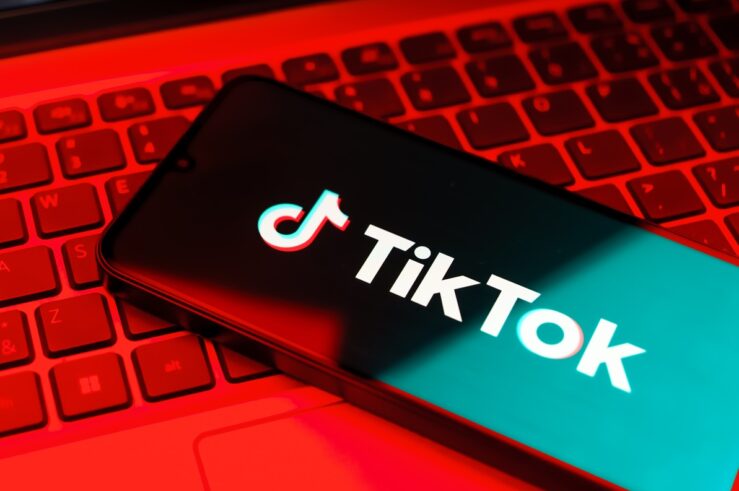Last week the Senate Judiciary Committee held a hearing, Intellectual Property and the Price of Prescription Drugs: Balancing Innovation and Competition, that explored whether changes to the pharmaceutical patent process could help lower drug prices. The committee’s goal was to evaluate various legislative proposals that might facilitate the entry of cheaper generic drugs, while also recognizing that strong patent rights for branded drugs are essential to incentivize drug innovation. As Committee Chairman Lindsey Graham explained:
One thing you don’t want to do is kill the goose who laid the golden egg, which is pharmaceutical development. But you also don’t want to have a system that extends unnecessarily beyond the ability to get your money back and make a profit, a patent system that drives up costs for the average consumer.
Several proposals that were discussed at the hearing have the potential to encourage competition in the pharmaceutical industry and help rein in drug prices. Below, I discuss these proposals, plus a few additional reforms. I also point out some of the language in the current draft proposals that goes a bit too far and threatens the ability of drug makers to remain innovative.
1. Prevent brand drug makers from blocking generic companies’ access to drug samples. Some brand drug makers have attempted to delay generic entry by restricting generics’ access to the drug samples necessary to conduct FDA-required bioequivalence studies. Some brand drug manufacturers have limited the ability of pharmacies or wholesalers to sell samples to generic companies or abused the REMS (Risk Evaluation Mitigation Strategy) program to refuse samples to generics under the auspices of REMS safety requirements. The Creating and Restoring Equal Access To Equivalent Samples (CREATES) Act of 2019 would allow potential generic competitors to bring an action in federal court for both injunctive relief and damages when brand companies block access to drug samples. It also gives the FDA discretion to approve alternative REMS safety protocols for generic competitors that have been denied samples under the brand companies’ REMS protocol. Although the vast majority of brand drug companies do not engage in the delay tactics addressed by CREATES, the Act would prevent the handful that do from thwarting generic competition. Increased generic competition should, in turn, reduce drug prices.
2. Restrict abuses of FDA Citizen Petitions. The citizen petition process was created as a way for individuals and community groups to flag legitimate concerns about drugs awaiting FDA approval. However, critics claim that the process has been misused by some brand drug makers who file petitions about specific generic drugs in the hopes of delaying their approval and market entry. Although FDA has indicated that citizens petitions rarely delay the approval of generic drugs, there have been a few drug makers, such as Shire ViroPharma, that have clearly abused the process and put unnecessary strain on FDA resources. The Stop The Overuse of Petitions and Get Affordable Medicines to Enter Soon (STOP GAMES) Act is intended to prevent such abuses. The Act reinforces the FDA and FTC’s ability to crack down on petitions meant to lengthen the approval process of a generic competitor, which should deter abuses of the system that can occasionally delay generic entry. However, lawmakers should make sure that adopted legislation doesn’t limit the ability of stakeholders (including drug makers that often know more about the safety of drugs than ordinary citizens) to raise serious concerns with the FDA.
3. Curtail Anticompetitive Pay-for-Delay Settlements. The Hatch-Waxman Act incentivizes generic companies to challenge brand drug patents by granting the first successful generic challenger a period of marketing exclusivity. Like all litigation, many of these patent challenges result in settlements instead of trials. The FTC and some courts have concluded that these settlements can be anticompetitive when the brand companies agree to pay the generic challenger in exchange for the generic company agreeing to forestall the launch of their lower-priced drug. Settlements that result in a cash payment are a red flag for anti-competitive behavior, so pay-for-delay settlements have evolved to involve other forms of consideration instead. As a result, the Preserve Access to Affordable Generics and Biosimilars Act aims to make an exchange of anything of value presumptively anticompetitive if the terms include a delay in research, development, manufacturing, or marketing of a generic drug. Deterring obvious pay-for-delay settlements will prevent delays to generic entry, making cheaper drugs available as quickly as possible to patients.
However, the Act’s rigid presumption that an exchange of anything of value is presumptively anticompetitive may also prevent legitimate settlements that ultimately benefit consumers. Brand drug makers should be allowed to compensate generic challengers to eliminate litigation risk and escape litigation expenses, and many settlements result in the generic drug coming to market before the expiration of the brand patent and possibly earlier than if there was prolonged litigation between the generic and brand company. A rigid presumption of anticompetitive behavior will deter these settlements, thereby increasing expenses for all parties that choose to litigate and possibly dissuading generics from bringing patent challenges in the first place. Indeed, the U.S. Supreme Court has declined to define these settlements as per se anticompetitive, and the FTC’s most recent agreement involving such settlements exempts several forms of exchanges of value. Any adopted legislation should follow the FTC’s lead and recognize that some exchanges of value are pro-consumer and pro-competitive.
4. Restore the balance established by Hatch-Waxman between branded drug innovators and generic drug challengers. I have previously discussed how an unbalanced inter partes review (IPR) process for challenging patents threatens to stifle drug innovation. Moreover, current law allows generic challengers to file duplicative claims in both federal court and through the IPR process. And because IPR proceedings do not have a standing requirement, the process has been exploited by entities that would never be granted standing in traditional patent litigation—hedge funds betting against a company by filing an IPR challenge in hopes of crashing the stock and profiting from the bet. The added expense to drug makers of defending both duplicative claims and claims against challengers that are exploiting the system increases litigation costs, which may be passed on to consumers in the form of higher prices.
The Hatch-Waxman Integrity Act (HWIA) is designed to return the balance established by Hatch-Waxman between branded drug innovators and generic drug challengers. It requires generic challengers to choose between either Hatch-Waxman litigation (which saves considerable costs by allowing generics to rely on the brand company’s safety and efficacy studies for FDA approval) or an IPR proceeding (which is faster and provides certain pro-challenger provisions). The HWIA would also eliminate the ability of hedge funds and similar entities to file IPR claims while shorting the stock. By reducing duplicative litigation and the exploitation of the IPR process, the HWIA will reduce costs and strengthen innovation incentives for drug makers. This will ensure that patent owners achieve clarity on the validity of their patents, which will spur new drug innovation and make sure that consumers continue to have access to life-improving drugs.
5. Curb illegal product hopping and patent thickets. Two drug maker tactics currently garnering a lot of attention are so-called “product hopping” and “patent thickets.” At its worst, product hopping involves brand drug makers making minor changes to a drug nearing the end of its patent so that they gets a new patent on the slightly-tweaked drug, and then withdrawing the original drug from the market so that patients shift to the newly patented drug and pharmacists can’t substitute a generic version of the original drug. Similarly, at their worst, patent thickets involve brand drug makers obtaining a web of patents on a single drug to extend the life of their exclusivity and make it too costly for other drug makers to challenge all of the patents associated with a drug. The proposed Affordable Prescriptions for Patients Act of 2019 is meant to stop these abuses of the patent system, which would facilitate generic entry and help to lower drug prices.
However, the Act goes too far by also capturing many legitimate activities in its definitions. For example, the bill defines as anticompetitive product-hopping the selling of any improved version of a drug during a window which extends to a year after the launch of the first generic competitor. Presently, to acquire a patent and FDA approval, the improved version of the drug must be different and innovative enough from the original drug, yet the Act would prevent the drug maker from selling such a product without satisfying a demanding three-pronged test before the FTC or a district court. Similarly, the Act defines as anticompetitive patent thickets any new patents filed on a drug in the same general family as the original patent, and this presumption can only be rebutted by providing extensive evidence and satisfying demanding standards to the FTC or a district court. As a result, the Act deters innovation activity that is at all related to an initial patent and, in doing so, ignores the fact that most important drug innovation is incremental innovation based on previous inventions. Thus, the proposal should be redrafted to capture truly anticompetitive product hopping and patent thicket activity, while exempting behavior this is critical for drug innovation.
Reforms that close loopholes in the current patent process should facilitate competition in the pharmaceutical industry and help to lower drug prices. However, lawmakers need to be sure that they don’t restrict patent rights to the extent that they deter innovation because a significant body of research predicts that patients’ health outcomes will suffer as a result.




